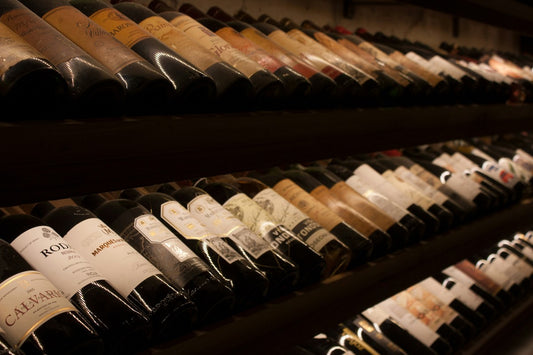How To Melt Chocolate Using Milk – Best Ways To Melt Chocolate
Norah Clark
You can melt chocolate by adding it to milk, and there are other methods. Most people will use cooking chocolate if they want to melt it, but it can be pretty bitter.
Are you making a rich and decadent chocolate dessert or cake? You may wonder if melting your chocolate with milk will add that extra level of indulgence, and I am here to tell you that you are correct!
In this article, I’ll take you through the procedure of how to melt chocolate using milk on both the stovetop and the microwave.
Some other essential chocolate melting tips are scattered throughout the article so I would encourage you to go through these before you get stuck into your project!
Chocolate Melting Methods
There are various ways to melt chocolate, and the result will vary depending on the method you choose. If you’re looking for specific results, here are some guidelines that will aid you:
- Speed: Accelerate the melting of chocolate by beginning with small chips, pieces, or chunks.
- Smoothness: Use additional liquids such as (melted) butter, water, or even liquor.
- Tempering: Patience and know-how are all you need to temper chocolate correctly for excellent results.
The Best Method to Melt Chocolate
In all truth, there isn’t a “best” way to melt chocolate. Some bakers insist that using a double boiler is the only way to achieve the perfectly melted chocolate, and others insist that microwaves are more efficient with great results.
Chocolate is undoubtedly easier to melt when it’s in smaller fragments before you begin melting it. It is also easier to melt chocolate using liquids.
How To Melt Chocolate With Milk
Melting chocolate with milk can accelerate the melting process and make your chocolate more creamy and rich and less bitter to taste.
The first step to melting chocolate using milk or other liquid is to make sure you’re using a sufficient amount of chocolate!
If you use only a small volume of liquid, the chocolate will 'sieze.‘ Chocolate that is seized will harden almost instantly to form a brittle, crumbly, dull, frustrating mess. Not ideal!
It is also important to make sure that you mix your chocolate and milk at the proper temperature to melt the chocolate properly.
Guide to Melting Chocolate With Milk
If you’d like to see the chocolate you melt remain smooth and liquid for long enough to serve as coatings or dips, you can follow our easy three-step process to get great results each time:
Step 1: Prepare Your Chocolate For Melting
To melt chocolate using milk, it’s absolutely necessary to start by breaking your chocolate into small pieces of chocolate that will melt easily and continuously.
Use cacao chips, chocolate wafers that are designed to melt quickly, or baking chocolate that has been chopped into smaller pieces.
Step 2: Measure and Warm the Milk
When your chocolate is ready to melt, measure the right amount of milk depending on how much chocolate you’re melting. Don’t forget, if you don’t have enough milk the chocolate will become dense and lumpy.
- How much milk to use? Take 1 teaspoon of milk per 2 ounces of chocolate
- Please note: dark chocolate may require additional liquid so have some extra just in case.
You should warm the milk before adding it to the chocolate. The addition of a cold liquid to warm chocolate could cause it to seize. Be careful to stay clear of temperature fluctuations while melting chocolate.
To warm the milk, use a pan and bring to a gentle/simmering temperature or in a microwave until it's warm.
Specific recipes, like chocolate ganache, will tell you to pour a hot liquid (usually water) over chocolate. In those instances, it is vital to adhere to the recipe precisely for the best results.
Step 3: Melt Chocolate In a Double Boiler
The most efficient way to melt chocolate using milk is to use the double boiler.
If you don’t own one, you can create double boilers by placing the glass or heat-resistant bowl in a saucepan or pot in a way that it does not touch the water but is placed against the side of the pan.
- Fill the bottom pot with water, then bring it to boiling point. Lower the heat to a simmer and place the glass bowl or pan with the chocolate on top of the steaming, boiling water.
- Warm up your milk in the microwave or separately, then add.
- Finally, add the chocolate pieces to the warm milk and stir with a spatula until it is combined.
When your chocolate has melted, take it off the heat immediately. The melted chocolate can quickly burn.
How to Melt Chocolate in the Microwave Using Milk
Making chocolate melt in your microwave is quicker than using a double boiler, but in some ways, it requires more patience.
It is not as easy as popping it all in the microwave, turning it on at high heat, and hoping for the best, unfortunately!
For the best results, you should adhere to these steps to melt chocolate with milk using a microwave:
- Begin by heating your milk in a safe microwave bowl big enough to hold both the chocolate and milk
- Once your milk is softly simmering, add the chocolate chips or wafers or pieces, and stir them well.
- Put it back in the microwave to cook for thirty seconds before stirring thoroughly and make sure you scrape the bowl’s sides with a silicone spatula.
- Repeat the heating process at intervals of 30 seconds and stirring every so often until the chocolate is nearly totally melted.
- Stop heating, but keep stirring until the chocolate melts smoothly by using the current heat. This will complete the melting process without the risk of overheating it.
General Tips for Microwaving Chocolate
Microwaving chocolate can be a fast method to achieve the results, with less equipment. It’s not too tricky, if you keep an eye on it, but there are some tricks and tricks to assist you in getting the best results every time.
Here are our top recommendations for melting chocolate in the microwave:
- Microwaving chocolate is a process that takes approximately 1 minute for each ounce (one ounce) of chocolate.
- Do not heat more than 30 seconds at one time.
- Make sure you stir your chocolate thoroughly and scratch the edges and the base of your bowl, the areas that receive the most heat, so that the chocolate doesn’t risk drying out, leaving crispy pieces of chocolate.
- Make sure to stop heating when your chocolate has reached 90-95% melt and stir to complete the process.
- Unless you intend to intentionally and carefully melt the chocolate into milk or other liquid, ensure there’s no water in the bowl before adding the chocolate. Even tiny amounts of fluid could ruin the result.
With the above steps, you should now be able to successfully melt chocolate with milk. Below you will find answers to some other questions relating to melting chocolate.
Frequently Asked Questions
How do I change the texture of the chocolate once melted?
The most effective way to make chocolate thinner after melting is to add oil to the mixture.
Cocoa butter is a good option since it’s an ingredient in chocolate, and it’s mostly fat, so it makes chocolate thinner without affecting the flavor.
You can also use nearly all kinds of oils, for example, coconut oil, butter, or a neutral-flavored oil. Be aware that if you employ peanut oil or olive oil, for instance, it could alter the taste of your chocolate.
Why should you add oil to melted chocolate?
Oil, or any other kind of fat, can help create a smooth surface for the chocolate to melt and will make it better suited to dip or coat.
The higher fat content in chocolate will make it stay liquid for longer. It melts more uniformly and evenly, giving it an even, smoother texture.
What does it mean to temper chocolate?
Tempering is the process of carefully melting chocolate, cooling and then heating it again, stirring consistently.
This assists in reintegrating the fat effortlessly into the liquid. It will restore shine to the chocolate, along with a sharp, snappy texture.










